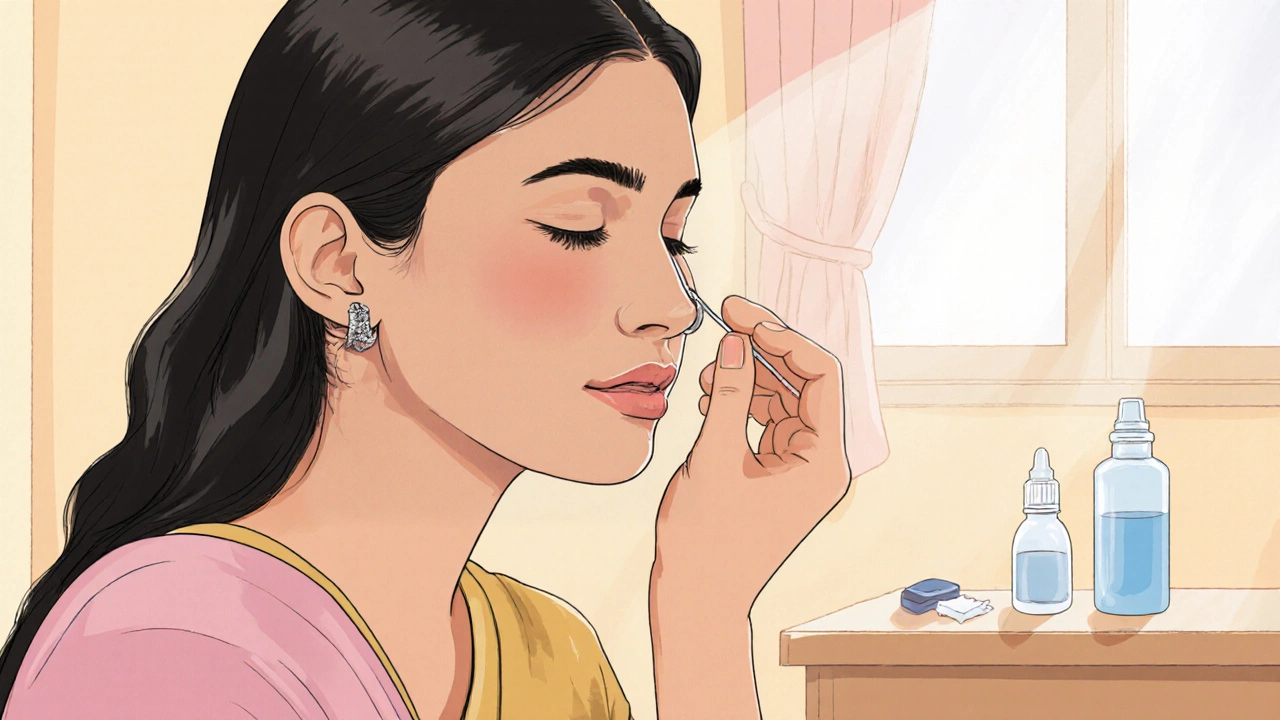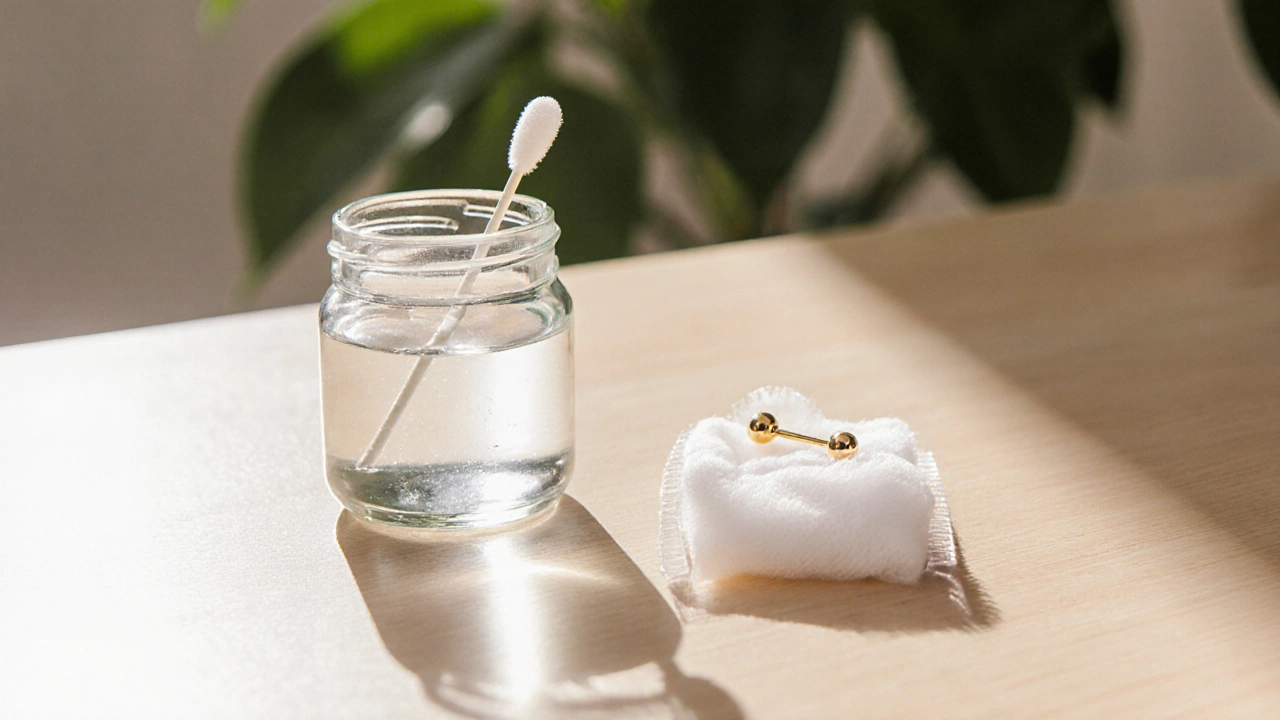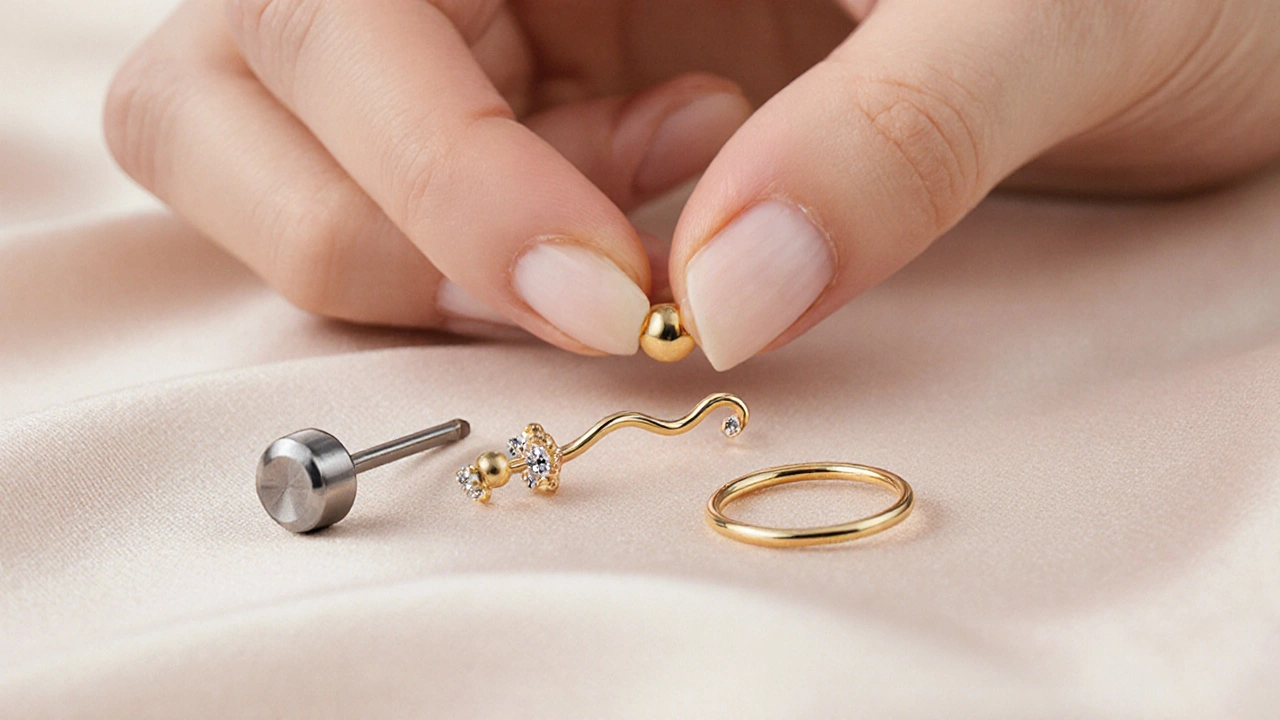Nose Pin Sizing & Material Advisor
Select Your Piercing Type
Choose your current piercing gauge size (1-2mm typically).
Recommended Nose Pin Options
Wearing a nose pin should feel effortless, not a daily battle. Whether you’re prepping for a wedding, a festival, or just want to add a subtle sparkle, the right approach can keep your nose pin secure, comfortable, and stylish all day long.
Key Takeaways
- Pick the correct size and material for your skin type.
- Use a clean, dry surface and gentle pressure to position the pin.
- Secure the backing with a tiny dab of medical‑grade adhesive if needed.
- Maintain hygiene with a mild cleaning solution to avoid infections.
- Check the fit daily; a loose pin can cause irritation or loss.
Understanding the Basics
Nose pin is a small piece of jewelry designed to sit in the nostril, typically featuring a decorative head and a straight post. It belongs to the broader family of earrings, but its placement and design demand a slightly different handling. The most common styles are studs, hoops, and captive‑bead hooks, each offering distinct looks and levels of comfort.
Choosing the Right Nose Pin for You
Start by matching the pin to your nose piercing size. Most adult nostril piercings range from 1mm to 2mm in gauge. A pin too thin may wobble, while an oversized post can stretch the tissue.
Material matters too. Surgical steel is affordable and hypoallergenic for many, but those with sensitive skin may opt for titanium or gold‑filled options, which offer a skin‑friendly coating that reduces the risk of irritation.
Consider the decorative head. Gem‑set studs add sparkle, while minimalist metal tops blend with everyday wear. If you plan to switch styles often, a head that unscrews (often called a “screw‑back” stud) lets you swap designs without removing the post.

Preparing Your Nostrils
Before you even touch the pin, ensure the area is clean. Wash your hands with antibacterial soap, then rinse the nostril with a mild saline solution. This reduces bacteria that could cause infection.
Dry the spot with a single‑use sterile gauze pad. Moisture can weaken the adhesive used in some backings and cause the pin to slide.
Step‑by‑Step: Wearing the Nose Pin
- Inspect the pin. Check that the post is straight, the head is intact, and the backing (often a tiny rubber or metal clasp) is secure.
- Position the post. Hold the pin by its decorative head. Gently insert the post into the nostril opening, aligning it with the natural curve of the cartilage.
- Secure the backing. If your pin uses a screw‑back, turn it clockwise until snug. For a friction‑fit stud, press the back against the inner wall until you feel a firm click.
- Apply a dab of adhesive (optional). Some people use a drop of medical‑grade skin adhesive (like Dermabond) on the back of the stud for extra hold, especially for lightweight designs that tend to slip.
- Check comfort. Tilt your head side‑to‑side. The pin should sit flush without pinching or pulling on the skin.
Ensuring Comfort and Safety
If you feel any pulling, the post may be too long. Trim a tiny portion using a clean nail file (only if the material is metal‑based and safe to file). Otherwise, replace the pin with a shorter gauge.
Watch for signs of irritation: redness, swelling, or a rash around the entry point. These could indicate an allergic reaction to the metal or an infection. In such cases, remove the pin immediately, cleanse with saline, and consult a professional piercer.
Cleaning and Maintenance
Daily cleaning keeps the nose pin looking bright and prevents bacterial buildup. Use a cotton swab dipped in a mild cleaning solution-think sterile saline or a 70% isopropyl alcohol solution. Gently wipe around the post and the decorative head.
When you’re not wearing the pin, store it in a small, sealable pouch with a piece of silica gel to absorb moisture. Avoid leaving it in humid bathrooms where metal can tarnish.

Common Mistakes to Avoid
- Using a pin that’s too heavy; it can stretch the cartilage over time.
- Skipping the cleaning step; bacteria thrive in warm, moist environments.
- Relying on cheap adhesive not meant for skin; it can cause irritant dermatitis.
- Wearing the pin while exercising or swimming without a secure backing.
- Ignoring early signs of allergy; promptly switch to a hypoallergenic material.
Comparison of Popular Nose Pin Types
| Type | Typical Material | Weight | Security Mechanism | Best For |
|---|---|---|---|---|
| Stud (screw‑back) | Titanium, surgical steel | Light | Screw‑in backing | Everyday wear, quick changes |
| Captive bead hook | Gold‑filled, stainless steel | Medium | Clasp with captive bead | Statement looks, larger designs |
| Hoop (continuous) | 14‑karat gold, surgical steel | Varies (light to heavy) | Push‑through clasp | Traditional styles, ethnic attire |
Next Steps
Now that you know how to wear a nose pin without fuss, try a simple pair of stainless‑steel studs first. Test the comfort for a day, then experiment with different decorative heads or materials as you get confident.
Remember, the key to a seamless experience is a good fit, clean hands, and a little patience. With the right care, your nose pin will stay in place, look dazzling, and never become a source of irritation.
Frequently Asked Questions
Can I wear a nose pin if I don’t have a pierced nostril?
Yes, there are clip‑on styles that grip the outer edge of the nostril without a hole. Look for options labeled “clip‑on” or “magnet” and ensure the material is hypoallergenic.
How often should I clean my nose pin?
At minimum, clean it every night before bed with a saline solution. If you notice any redness or discharge, increase cleaning to twice daily.
What material is safest for sensitive skin?
Titanium (gradeII or III) and 14‑karat gold are the top choices. Both are nickel‑free and less likely to cause allergic reactions.
Will adhesive damage my skin?
Medical‑grade adhesives are designed for brief skin contact and usually peel off without residue. Avoid household glues, as they can irritate or even cause burns.
How can I tell if my nose pin is too tight?
If you feel a constant pinching sensation or notice the surrounding skin turning white, the post is pressing too hard. Loosen or switch to a shorter gauge.



